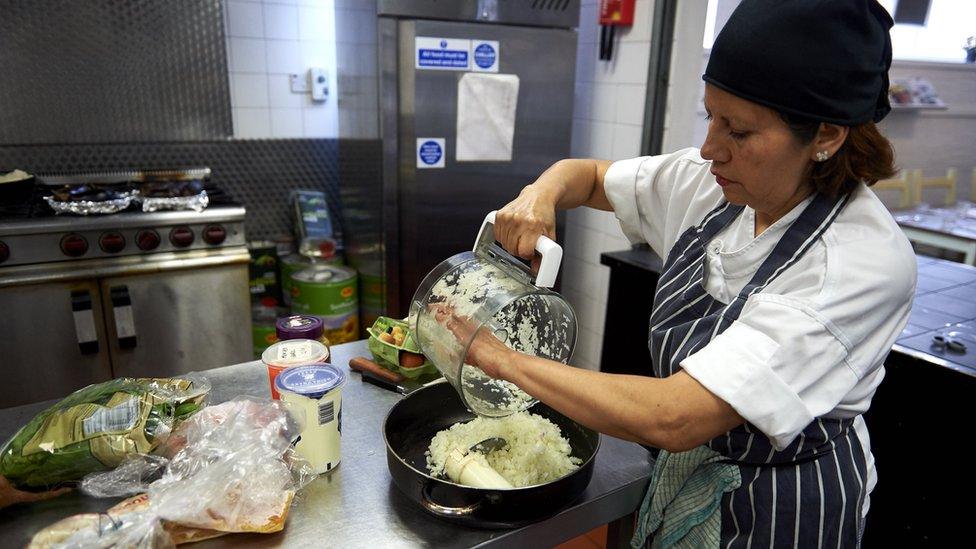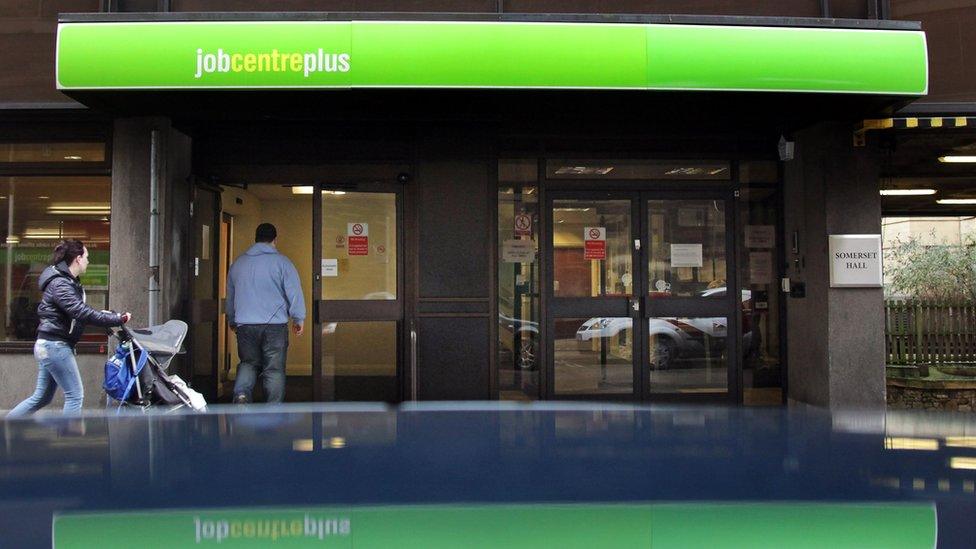UK unemployment falls to 1.6 million
- Published
- comments

UK unemployment fell by 52,000 to 1.6 million in the three months to November - the lowest level for more than a decade - official figures showed.
The jobless rate was steady at an 11-year low of 4.8%, the Office for National Statistics said.
The employment rate was steady at a record 74.5%, while wage growth picked up pace.
Average weekly earnings excluding bonuses increased by 2.7% compared with a year earlier.
Growth in pay including bonuses rose 0.2 percentage points to 2.8% for the year to November.
However, the number of people in work slipped by 9,000 to just over 31.8 million, the ONS said.
It was the second consecutive report to show a decline in the number of people in work - the first back-to-back fall since mid-2015.
The number of full-time workers was 209,000 higher at 23.25 million people, while the total of part-time employees jumped 86,000 to 8.55 million.
Employment minister Damian Hinds described the figures as encouraging and highlighted the "strength and resilience" of the UK labour market.
'Moderate'
David Freeman, ONS senior statistician, said: "While employment is little changed on the quarter, the rate remains at an historic high."
"The rate at which pay is increasing continues to pick up in cash terms, though it remains moderate," he added.
The claimant count fell by 10,100 in December to 797,800.

Analysis: Andy Verity, economics correspondent
Appropriate scepticism is due, but it looks very much like growth in the labour force, which we have taken for granted for years, has ground slowly to a halt from a peak last July.
Within the labour market is another number, more perhaps of political than economic significance. But it is an official statistic and one that those who successfully campaigned for the UK to leave the European Union would point to: where the newly employed people were born.
These data were first published in November and are for the July to September period, but are nevertheless worth noting.
The number of UK-born people working in the UK rose by 37,000. The number of non-UK born people working in Britain rose by 430,000.
Next month we will get the updated numbers for nationality and birth in the workforce and therefore have a better idea of whether it has anything to do with the Brexit vote.

Paul Hollingsworth at Capital Economics said the UK labour market remained resilient despite Brexit uncertainty.
"Employment fell by 9,000 in the three months to November, but this was a much smaller fall than the consensus expectation of a 35,000 drop," he said.
"And the timelier claimant-count measure of unemployment fell by 10,100, in contrast to expectations of a 5,000 rise. Employment growth should maintain a decent pace in the near term."
There were 8.89 million people aged 16 to 64 who were not working and not looking for jobs or available to work - known as economically inactive - for the three months to November. That was 85,000 higher than the June-to-August period, but 63,000 fewer than the three months to November 2015.
The jobless rate for the three months to November in Wales stood at 4.4%, 5.1% for Scotland and 5.6% in Northern Ireland.
In England the South East had the lowest rate of unemployment at 3.4%, with the North East the highest at 6.8%. London also has a higher rate than the national average at 5.6%.

The unemployment figures are based on the Labour Force Survey in which the ONS talks to about 40,000 households, or 100,000 individuals, every three months.
As it is a survey, the results are estimates and have a margin of error.
For example, the ONS is 95% confident that its estimate of a fall in unemployment of 52,000 is correct to within 81,000.
That means we cannot say with 95% confidence that unemployment has fallen at all, so the drop is described as not being statistically significant.
- Published17 January 2017

- Published14 December 2016
